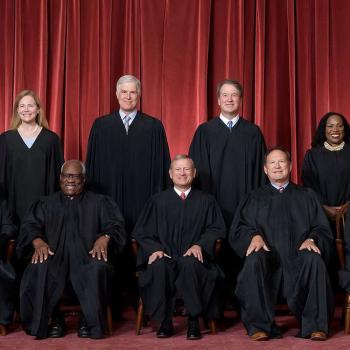The headlines painted a grim picture. According to The Wall Street Journal, U.S. Maternal Mortality Hits Highest Level Since 1965. The New York Times warned More Mothers Are Dying. Vox announced, We finally have a new US maternal mortality estimate. It’s still terrible. with the deck, “Among 10 similarly wealthy countries, ‘the US would rank 10th.’”
The implication or unstated conclusion drawn from this data is that it’s dangerous for a woman to have a baby and that getting an abortion is the safer course of action.
But demographer Lyman Stone shoots down those statistics in no uncertain terms in his piece for Governing entitled No, the Maternal Mortality Rate Is Not Rising with the explanatory deck, “The scare headlines about maternal mortality going up and being especially deadly for Black women are based on changes in data collection, not deaths. The real numbers show that the U.S. is not an outlier.”
He is insistent:
All of these articles are completely wrong – utterly and stupendously wrong. They have failed at basic mathematics, which creates unneeded fear among expectant mothers. Maternal mortality in America is not high, it is not rising, and the risk factors for it are not mysterious and many of them can be controlled.
My claim here may seem outlandish given the popularity of apocalyptic narratives about maternal mortality. The reality, however, is that the seemingly escalating rates of maternal mortality have been driven by a simple change in a standard reporting form. We know this is the case because the form has been changed at various times by different states over the past 20 years, always with the same effect — a sudden spike in maternal mortality that was not driven by new deaths, but the revised form.
Previously, statistics on the number of women who died in childbirth–which is always tragic–were based on the cause of death as reported by coroners or medical examiners on death certificates. In 2003, the CDC recommended that states include a check box on death certificates that would indicate whether or not the deceased had been pregnant over the last 42 days. Thus, if a woman died of pneumonia but had recently been pregnant, the coroner would check the box and it would be reported as a “maternal death.” Even though her death had nothing to do with her pregnancy. Also, the new way of reporting focused on pregnancy, not on giving birth, though those numbers would be included. So the new numbers would include death from miscarriage or abortion.
So with this new way of reporting of course the maternal death rate would shoot up. Europe uses the old way of counting–and often doesn’t include deaths of abortion–so of course their rates are much lower.
If we had used the old reporting form, the maternal death rate would be just under 9 per 100,000 live births, a number essentially unchanged over the last decade. The rate reported with the new form is 32.9 deaths per 100,000 births, a shocking spike indeed, but one fully accounted for by the change in reporting.
Stone goes on to compare the rate for deaths-while-pregnant with the death rate of women generally. He found that “all deaths with any pregnancy-related condition as any cause of death reveal a much lower death rate than women generally, except for women under age 15.”
Stone concludes, “It’s pretty open-and-shut. U.S. maternal mortality rose because of a change to the reporting form. That’s the entire story. The articles about crisis levels of maternal mortality are completely wrong.”
Photo from PickPik royalty free photos














